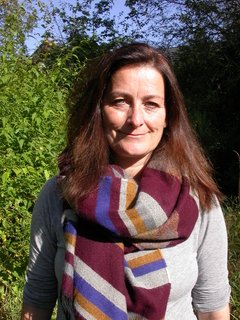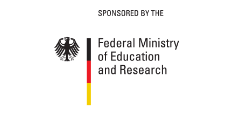Evolutionary biologists in the 19th century:
Fritz (1822-1897) and Hermann Müller (1829-1883) – natural science ’for Darwin’: under this header, the Biohistoricum organized a scientific symposium to take place in the lecture hall of the Zoological Research Museum Alexander Koenig. The ‘Müller Symposium’ presented various – and partially unknown – aspects of the life and work of two important natural scientists and early Darwinians of the 19th century.
This symposium was in line with a previous meeting on ‘Hermann Müller-Lippstadt (1829-1883) – Naturforscher und Pädagoge’ held at the Ostendorf-Gymnasium in Lippstadt on September 27, 2008.
Both symposia were determined to estimate the importance of the Müller brothers for biological science and for evolutionary theory.
Scientists from both Germany and Brazil paid tribute to their work from the various perpectives.
Two books have been published.
http://www.basilisken-presse.de/biohistorische-symposien/hermann-muller-lippstadt-1829-1883-naturforscher-und-padagoge.html
http://www.basilisken-presse.de/biohistorische-symposien/fritz-und-hermann-muller.html
In the meantime, the Müller research, particularly with regard to Hermann Müller, has widened due to the fact that the still existing diaries from 1845, 1851, 1852 (incl. 1854, 1855), 1863 (incl. 1864, 1866, 1867) and 1883, as well as the travel itineraries from 1842, 1846, 1848, have become available for research. In addition to that, circa 90 letters from the correspondence between Hermann Müller and numerous naturalists were discovered in the German National Library, the Senckenberg German Entomological Institute in Müncheberg, the Zentralbibliothek Zürich and in Charles Darwin’s estate at University of Cambridge, UK. Research on Müller currently is reinforced by Europaschule Ostendorf-Gymnasium (Michael Morkramer) as the estate’s administrator on behalf of the school collections, the LWL-Museum of Natural History in Münster (Bernd Tenbergen), the University of Münster (Brasilienzentrum, Ricardo Schuch/AFO-Innovation Office, Wilhelm Bauhus), the Botanical Gardens Darmstadt (Stefan Schneckenburger), AK Evolutionsbiologie at University of Kassel (Ulrich Kutschera).
The Brazilian fauna on wall carpets – biodiversity and interdisciplinarity
As one of the editors and authors, I am involved in a research project and book on the tapestry episode Tenture des Indes. These tapestries were woven in the 17th century at the instigation of John Maurice of Nassau-Siegen, who was Governor General serving the Dutch West India Company in Northeast Brazil from 1637 to 1644. He commissioned scholars and painters to document the regional geography, people, flora and fauna. This led to hundreds of drawings created in oil and chalk, now bound as Libri Picturati A 32-38 in the Jagiellonian Library, Cracow, as well as the first science-based natural history of this part of South America, the Historia naturalis Brasiliae [...], 1648, by Georg Markgraf and Willem Piso. Based on this treasure, and from own observations, the painter Albert Eckhout drew the design of web templates, the cartons. I could identify not less than 224 animal figures on the eight tapestries of Anciennes Indes series. Its subjects were quite novel at the time. I have provided comments and annotations of those motifs based on my knowledge of the sketches from Brazil. Such an in-depth zoological analysis is essential to provide art historians with a profound basis for interpretation.
Interdisciplinary cooperation is thus the key to the development of the book, and it has reached the stage of near-completion by now. Participants include scientists from the fields of art history, history, anthropology, lusitanistics and linguistics from Germany, France, Austria and Brazil. - For zoological research, the findings also provide benefits to biodiversity research. The tapestries actually show a variety of species that was found on the coast of Northeast Brazil in the 17th century but is now lost due to habitat loss by deforestation and human settlement. The testimony of biological history, as such the Tenture des Indes can be considered, has been unraveled by joining efforts from various disciplines.






